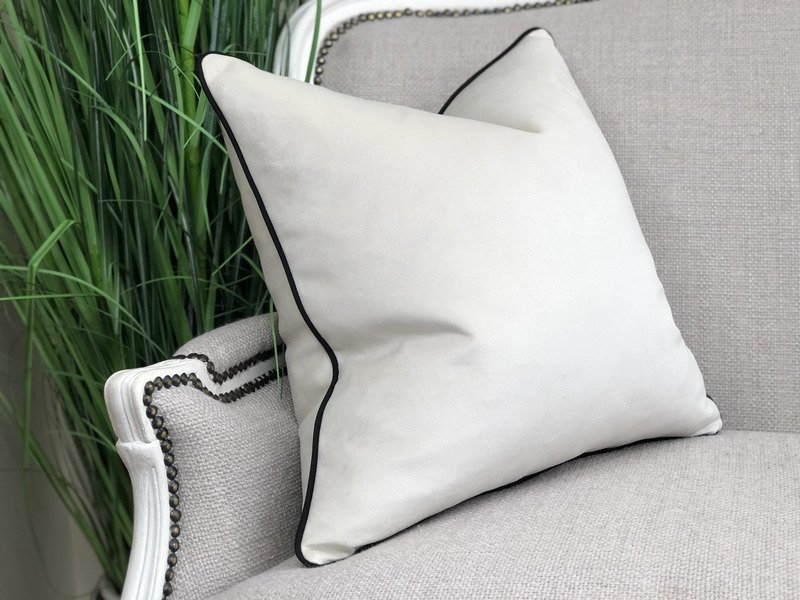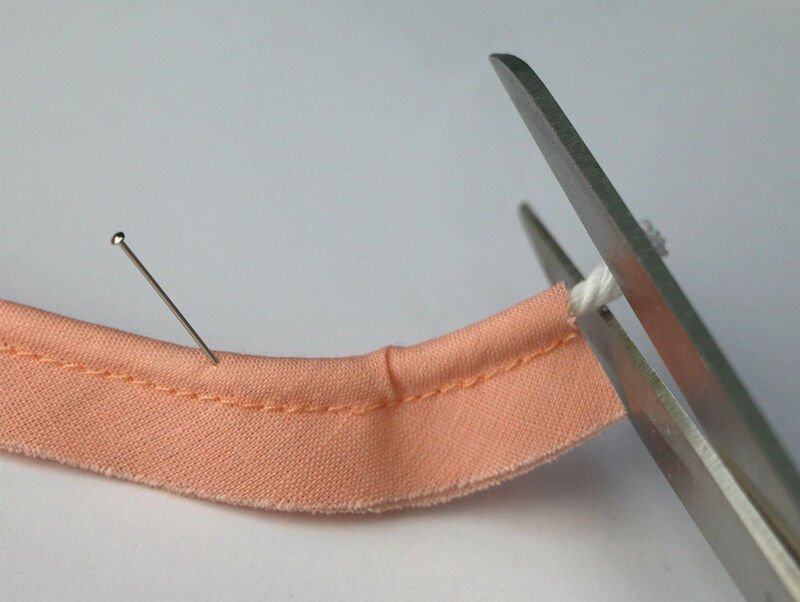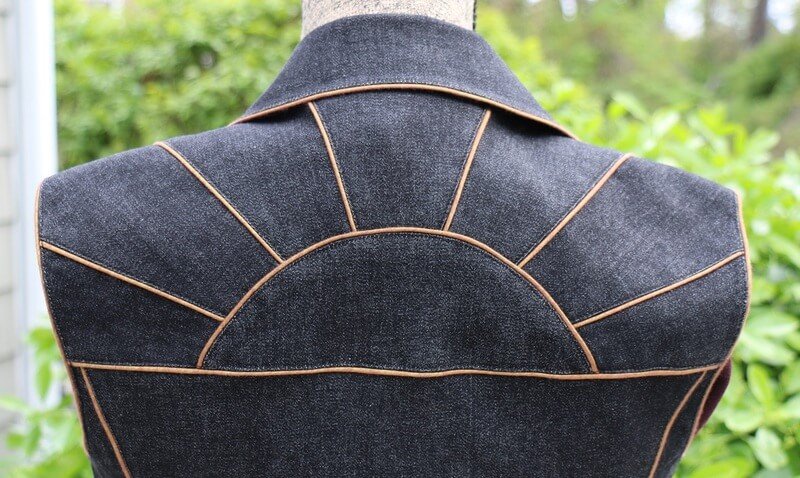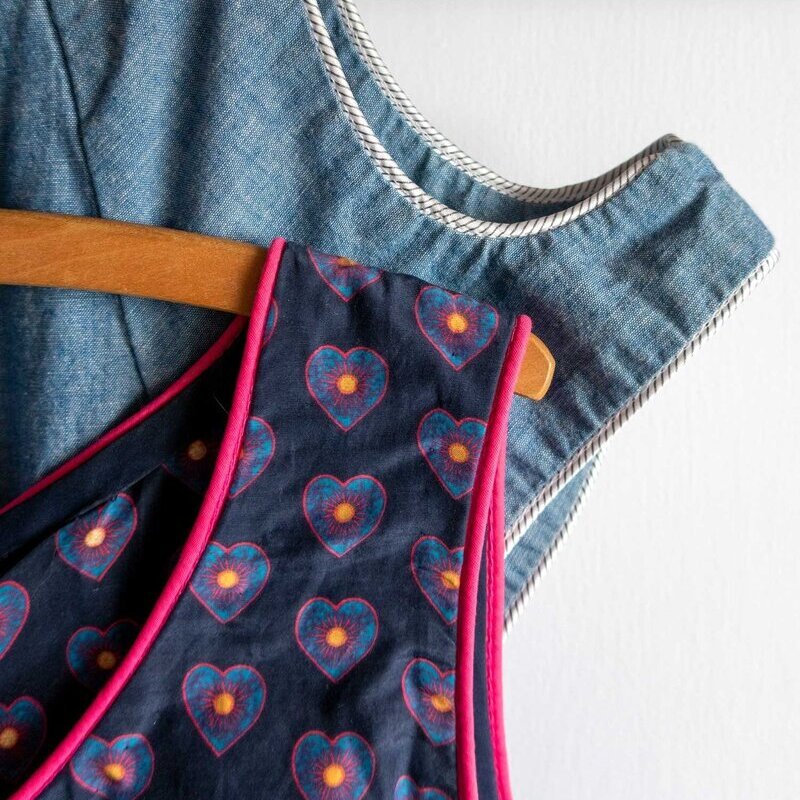What is Piping: Your Simple Guide to This Key Sewing Detail
Have you ever looked closely at a smart jacket, a comfy cushion, or a stylish bag and seen a neat, raised fabric line along the edges or seams? It often looks very tidy and gives the item a special, finished touch. That cool sewing detail is often called ‘piping’.
In this simple guide, we’ll explain exactly what piping is in sewing and clothing. You’ll learn why people use it, where you can find it, and what it’s made of. By the end, you’ll know all about this interesting design feature!
1. What exactly is piping in sewing and clothes?
Piping is a type of trim or decoration used in sewing. Imagine a thin, round ‘tube’ made of fabric. This fabric tube is then sewn into a seam (where two pieces of fabric are joined) or along the edge of an item. It creates a raised, defined line that looks very smart. Piping is a type of trim added for style and definition.
Classic corded piping typically has two main parts:
- Fabric strip (the outer part): this is the part you see. It’s a long, narrow strip of fabric. Often, this strip is cut ‘on the bias’ (diagonally across the fabric grain). Cutting it this way allows the piping to bend smoothly around curves without puckering or becoming distorted. This is a key detail for a professional finish.
- Cord (the inner filler): inside the fabric strip, there is usually a cord, like a piece of string or thin rope. This is the ‘filler’ that gives piping its round shape and makes it stand out. The cord is usually not seen in the finished item. The inner cord provides structure, while the outer fabric strip creates the visual appeal.
To make piping, the fabric is folded over a cord. Then it’s stitched close to the cord to hold it all in place. The finished piping creates a distinct, raised line. This decorative feature is similar to other trims like ribbons or lace because it’s an added detail. One of its unique characteristics is that it creates a distinct raised line or border.

2. Why do people use piping?
People use piping for several great reasons. It’s not just about looks; it can also be practical.
- Makes things look fancy and finished: piping gives a neat, professional, and often more expensive appearance. It adds a professional, tailored look to garments and creates clean, crisp edges, making items look well-made. This is a common edge treatment technique.
- Adds color and fun (visual interest): piping can introduce a pop of contrasting color or pattern. For example, white piping on a navy jacket looks very sharp. You can also use “self-piping,” where the piping is made from the same fabric as the main item. This adds a subtle texture and definition and offers versatile design possibilities with color and texture, acting as a visual accent.
- Highlights shapes and defines edges: piping helps to highlight curves, like on necklines, or straight lines, like on pocket tops. It can also define the overall form of items like cushions, making design elements stand out. This is a key use for edge definition. At Packlove, we’ve seen many clients use various trims effectively; designers use piping to enhance the outlines of their products, making them more appealing to customers. The impact of trims like piping on garment quality and branding is significant.
- Enhances durability and strengthens edges: the extra layer of fabric and cord in piping can reinforce seams and edges. This is especially useful on items that get a lot of wear and tear, such as bags or furniture. This shows that piping has both decorative and structural functions. This practical benefit of added strength is something we at Packlove often discuss with clients looking for durable branding solutions for their items, as it also applies to how well labels and tags can be attached and last. This kind of detail contributes to the overall seam finish.

3. Where can you see piping?
Piping is a versatile detail used on many different items. Once you start looking for it, you’ll notice it in many places! An explanation of piping in garments often starts with common examples.

3.1 On clothes
You’ll often find piping on accessories and clothing. Piping is often featured on garments for added detail.
- Collars and cuffs: defining the edges of shirt collars or jacket cuffs.
- Pockets: outlining patch pockets or along the opening of welt pockets.
- Seams: sometimes used on the seams of jackets or trousers for a smart look.
- Necklines and waistbands: to give a clean finish.
- Pajamas: classic pajama sets often feature contrast piping.
- Children’s wear: adds a playful touch and can make items more durable.
- Uniforms and vests: for sharp edge definition or to add an accent color. This is common in apparel design.
3.2 In your home
- Cushions & pillows: very common for defining edges and adding a decorative touch.
- Sofas & chairs: defines the shape of cushions, armrests, and backrests. Upholstery is a prime example where piping is extensively used.
- Blankets & throws: used as a border for a finished look.
- Duvet covers & shams: adds a touch of elegance to bedding.
3.3 On bags and accessories
- Tote bags and makeup bags: often used to give structure and a decorative finish.
- Purses and backpacks: can outline flaps, pockets, or main body seams.
- Luggage: provides structure and a smart, durable edge.
- The structure of bags can be significantly enhanced with piping.
4. What is piping made of?
Piping is usually made from two main parts: the outer fabric strip (the ‘pipe’ part you see) and the inner cord (the ‘filler’). The material of the fabric and cord are key to its appearance and function. When discussing what material is used for making piping, both components are important.

4.1 The fabric part (the “pipe”)
The fabric strip for piping is most often cut ‘on the bias.’ As mentioned before, this means it’s cut diagonally across the weave of the fabric. Fabric cut this way has a little bit of natural stretch, even if the fabric itself isn’t stretchy. This is important because it allows the piping to bend smoothly around curves and corners without wrinkling or pulling.
At Packlove, we often advise clients on material properties for their branding items. For trims like piping, flexibility for smooth application is a key consideration, much like choosing the right label material that conforms to a product’s shape. Choosing fabrics for making piping involves considering both look and function. This fabric piece can be referred to as a fabric insert or bias tape when prepared for piping.
Common fabrics used for the strip include:
- Cotton fabric: easy to sew, available in many colors and prints. Great for everyday items and casual wear.
- Satin or silk: gives a shiny, luxurious look. Often used for formal wear, lingerie, or elegant home decor.
- Velvet: provides a rich, soft texture. Perfect for special occasion garments or plush furnishings.
- “Self-fabric” piping: this is when the piping is made from the same fabric as the main item. It creates a subtle, three-dimensional detail.
- Leather or faux leather: offers a durable, sometimes edgy look. Good for bags, jackets, and some furniture.
4.2 The cord part (the “filler”)
The inner cord gives piping its round shape.
- Material of the cord: usually made from materials like cotton cord, polyester cord, or soft yarn. The cord needs to be flexible enough to bend but firm enough to hold its shape.
- Sizes of cord: cords come in various thicknesses, for example, 2mm, 3mm, or 5mm (which is roughly 1/16 inch to 1/4 inch). The size of the cord determines how thick the finished piping will look. Thinner cords create delicate piping, while thicker cords make a bolder statement. These are common piping cord sizes.
- Piping without a cord (flat piping): it’s also possible to create piping without an inner cord. In this case, a strip of fabric is folded and sewn into a seam or along an edge, but there’s no cord inside. This is often called flat piping or ‘mock piping.’ It creates a defined, decorative band rather than a round, raised tube.
5. How to spot piping when you see it
Now that you know so much about piping, spotting piping detail will be much easier! Here are a few simple tips on how to identify piping on a garment or other items:
- Look for a raised, tube-like edge or line along a seam or edge.
- It usually appears as a distinct, neatly inserted trim, separate from the main fabric pieces.
- It often outlines a shape (like a collar or pocket) or adds a contrasting color.
- Check for consistency in its roundness and width along its length.

6. Are there different kinds of piping?
While the basic idea of piping (a fabric-covered cord or strip) is common, there are a few special variations and different types of piping for apparel and other uses. Here’s a quick look at some varieties of piping trim:
- Standard corded piping: this is the most common type we’ve discussed, with a fabric strip covering an inner cord.
- Flat piping (or mock piping / inserted piping): as mentioned earlier, this is a folded fabric strip sewn into a seam without any cord inside. It creates a flat, decorative border rather than a round one. This is also a type of fabric insert.
- Stretch piping: made with stretchy fabric and sometimes a stretchy cord. This is used for garments made from knit or stretch fabrics, like activewear or t-shirts, allowing the edge to stretch with the garment. Stretch piping for knitwear is quite common.
- Reflective piping: this type of piping has a reflective surface. It’s often used on sportswear, children’s wear, and bags for visibility and safety in low-light conditions.
- Metallic piping: made with fabric that has a metallic look, like gold or silver. This adds a glamorous or flashy touch to fashion items or decor.

7. Piping: A small detail that makes a big impact
So, as you’ve learned, piping might seem like a small detail, but it truly makes a big impact on the overall look and feel of clothes, home furnishings, and accessories. It adds that extra touch of quality, detail in sewing, style, and completeness. When you see well-executed piping, it often signals that care and attention to detail went into making the item. It’s a hallmark of good craftsmanship in garments.
The impact of small details should not be underestimated. This idea of small details making a big difference is something we at Packlove believe in too. Just like thoughtful piping elevates a garment, carefully designed and chosen packaging elements – like our custom tags, labels, and bags – help a product stand out, tell its story, and convey quality.
The branding details Packlove focuses on demonstrate to customers that you care about your brand and their experience.

8. Your piping questions answered (FAQs)
Still have questions about piping? Here are answers to some common ones. These are part of broader textile finishing techniques.
8.1 Is it hard to sew piping yourself?
Sewing piping, especially around curves, can take a bit of practice. Using a special sewing machine foot called a “piping foot” or a “zipper foot” can make it much easier. While this article focuses on what piping is, you can find many tutorials online that teach how to sew piping into a seam.
At Packlove, we provide finished branding elements to enhance your products, complementing the care you put into making them. Remembering these tips can be helpful.
8.2 What’s the difference between piping and welting?
These terms are often used interchangeably, especially in dressmaking and home decor, so the difference between piping and welting can be confusing. Generally, ‘piping’ is the more common term for the type of trim we’ve described. ‘Welting’ or ‘welt cord’ sometimes refers to a larger, thicker corded trim, often used in heavy-duty upholstery like on sofas. For most clothing, accessories, and lighter home decor, ‘piping’ is the usual term.
8.3 Can I buy piping that’s already made?
Yes, definitely! You can buy pre-made piping or ‘ready-made piping’ from fabric stores or online suppliers. It usually comes sold by the yard or meter, or on rolls. It’s available in many different colors, fabrics (like cotton or satin), and various cord thicknesses. Using pre-made piping can be a great time-saver for your sewing projects. Packlove understands the value of ready-made components for efficiency in production.
8.4 Why is it called “piping”?
The name likely comes from the finished trim’s resemblance to a small ‘pipe’ or a narrow tube of fabric, especially when it contains a cord.
8.5 When should I think about using piping on something I make?
Consider using piping when you want to:
- Clearly define an edge, like on a collar, cuff, pocket, or cushion.
- Add a pop of contrasting color or an interesting pattern.
- Make seams look exceptionally neat and professional from the outside.
- Give an item a more structured, tailored, or ‘high-end’ look.
- Add a decorative element that stands out and adds character. There are many creative uses of piping in fashion design.
Explore more:
We hope this guide helped you understand all about piping! At Packlove, we know that small details like piping make a big difference in products. Similarly, thoughtful packaging details like custom labels and tags can truly elevate your brand. If you’re looking for ways to make your products shine with beautiful, custom branding elements, the Packlove team is here to help! Ready to explore branding options? Contact us!






















